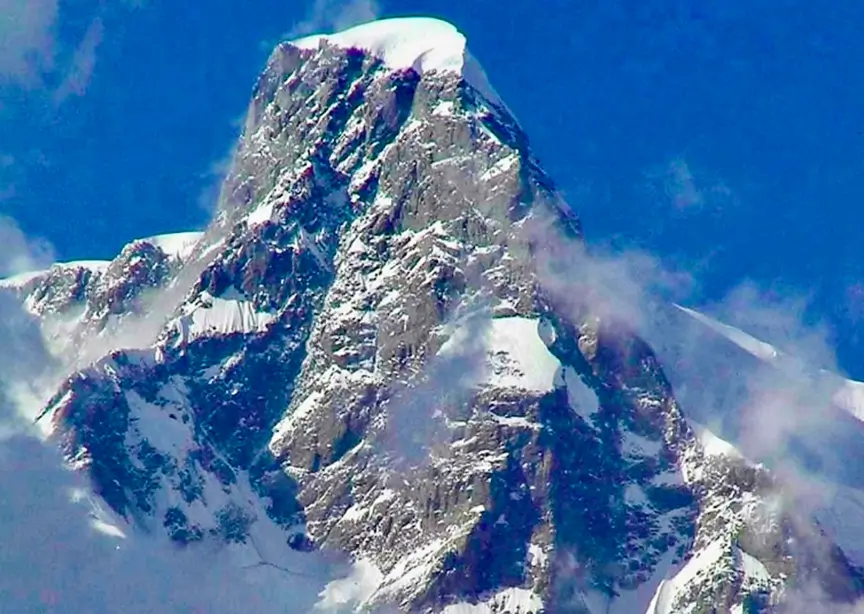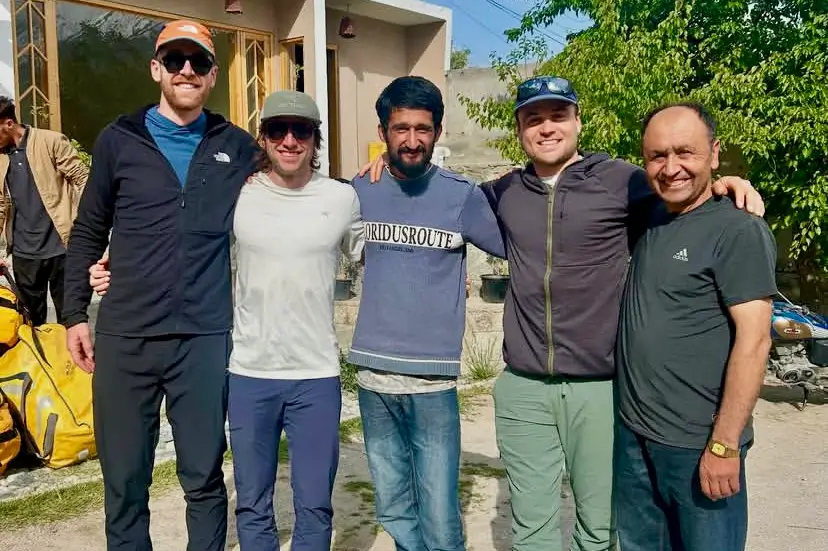First Ascent of the Southeast Pillar on Ultar Sar
A trio of elite alpinists – Ethan Berman, Sebastian Pelletti, and Maarten van Haeren – has achieved the first-ever ascent of the Southeast Pillar of 7,388 m Ultar Sar, a long-standing objective in the Karakoram that had previously thwarted numerous attempts. This remarkable ascent was completed in alpine style: lightweight, fast, and without fixed ropes or established high camps. The climbers tackled a daunting 3,100 m route, featuring steep snow, ice, and mixed terrain up to 6,500 m, before confronting a grueling mixed section and a final rock pillar leading directly to the summit.

Ultar Sar. Photo: Alpine Adventure Guides
Table of contents
The Climb in Brief
The Pillar’s History & Challenges
Why This Ascent Matters
What Lies Ahead
The Climb in Brief
- Attempt timeline: Their 2025 expedition, supported by the American Alpine Club’s Cutting Edge Grant and the Alpine Club of Canada’s John Lauchlan Memorial Award, followed a previous unsuccessful attempt in 2024, where they turned back around 6,000 m due to unstable snow.
- Route duration: From June 6 to 13, the team endured six days of upward climbing and two days descending, including one full stop due to hazardous weather, on the route they named “Shooting the Moon”.
The Pillar’s History & Challenges
Ultar Sar, also known as Bojohagur Duan Asir II, towers over the Hunza Valley with a relief of 5,300 m. Its Southeast Pillar – often dubbed the Hidden Pillar or Walker Spur – represented one of the last unconquered lines in the Karakoram.
Key failed attempts included:
- 1992, Toshio Narita’s party turned back from 5,400 m.
- 2000, Blanc Gras, Graziani, Le Lann, and Qualizza forced back by weather before even starting the pillar.
- 2005, Graziani and Trommsdorff reached ~5,800 m.
- 2011, Ichimura and Sato ascended to 6,500 m in alpine style before retreat due to snow.
- 2018, Miller, Normand, and Huber reached 5,900 m, endured prolonged snow and an avalanche which tragically claimed Huber’s life.
Most recently, in 2024, Berman’s team had to abandon their push around 6,000 m due to unstable snow
Why This Ascent Matters
- The Southeast Pillar was considered longer than Latok I’s North Ridge, demanding sustained high-difficulty climbing in mixed terrain and rock, especially between 6,500–7,000 m.
- Achieved in alpine style, this ascent underscores modern alpinism’s emphasis on efficiency, skill, and minimalism.
- The trio’s success honors the memory of past climbers, including Christian Huber, and cements their place among the greats in high-altitude alpinism.

What Lies Ahead
Now safely in Pakistan after a challenging approach hampered by flight cancellations amid regional tensions, the climbers are preparing to return home. Their achievement reopens discussion on what the next “too-big” objectives are – whether in the Karakoram’s icy heights or elsewhere.
This story isn’t just about conquering vertical rock and ice. It’s about vision, calculated risk, relentless perseverance, and honoring those who tried before. The Southeast Pillar of Ultar Sar now stands conquered, and with it, a mark for future climbers to admire – and maybe, one day, surpass.
